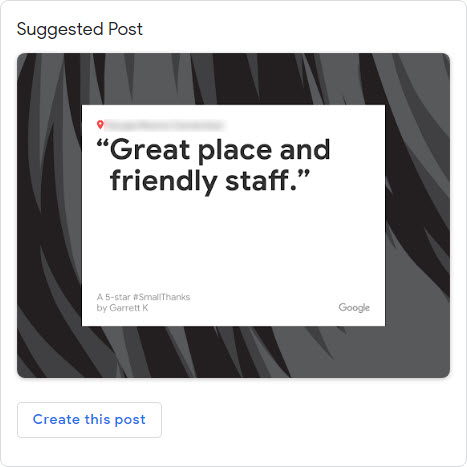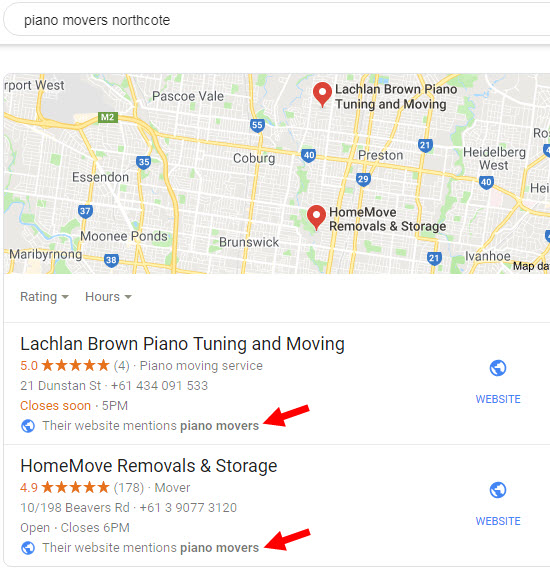I always like when Google drops a subtle hint about what it wants you to do.
If you haven’t done a Google My Business post recently, and if you have a good-sized pile of Google reviews, there’s a good chance Google will auto-generate a “Suggested Post” that quotes one of your Google reviews. (As of this writing, I call this feature “Suggested Review,” because the only type of post Google seems to suggest is a somewhat-bland excerpt of a review.)
You may see it when you log into your Google My Business dashboard. It will look something like this.


The “suggested” review seems to be an offshoot of the “Small Thanks” program, in which Google tries to charm you into making your Google reviews more visible on Google.
I’m not the first to spot this. Cordell Crowley posted on this at the Local Search Forum last month. I hadn’t seen the “Suggested Post” feature then. Because I haven’t heard anything about it since then – or seen this new kind of GMB post in the wild – I assume most other people also haven’t seen hide or hair of it in their Google My Business dashboards.
If you’ve done a Google My Business post recently (within the last 7 days, or you used my workaround), you won’t see the “Suggested Post” option. Likewise if you don’t have many reviews (I’m trying to get a bead on the number), or if you see a “suspended” message in the GMB dashboard.
It doesn’t appear there’s a way for you to see Google’s “Suggested Post” if you have been active in posting to GMB, which is a shame. Apparently, there’s also no way to pick a different review for Google to excerpt. The spirit of Henry Ford lives on.
Not a game-changer feature by any means, but a handy new capability. Hope it stays around for long enough to determine whether it’s useful.
—
Do you see the “Suggested Post” option in your dashboard?
Have you tried it out?
Leave a comment!



















